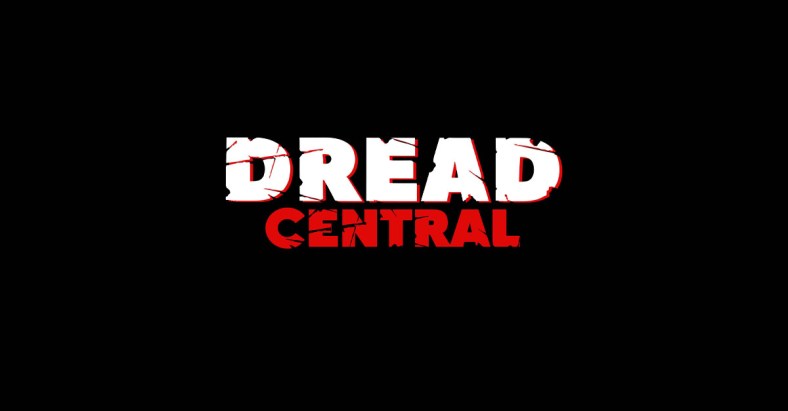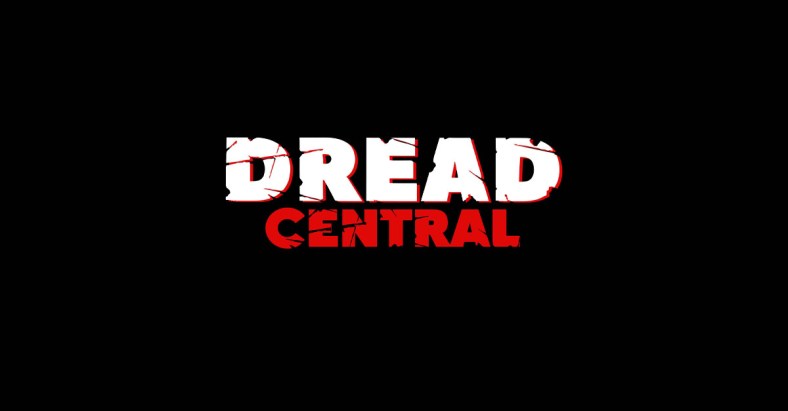Charles Bernstein’s Paws-itively Perfect ‘Cujo’ Score [Terror on the Turntable]

Welcome to Terror on the Turntable! In this monthly column, join Rachel Reeves as she explores the powerful and unholy alliance that exists between horror films and their scores. Covering only scores that have been released on vinyl, it’s a conversation about the intersection of music theory, composer style, film history, and the art of deep listening. So, light the candles, put on your headphones, and get ready to drop that needle. The sacred ritual of listening to music on wax is about to begin. For this installment, Rachel bites into Charles Bernstein’s music for Cujo.
If one were to ask the general population what Stephen King’s novel Cujo is about, most answers would undoubtedly fall in the “rabid dog attacks” camp. And, they wouldn’t really be wrong. But as most Constant Readers can attest, the terrifying webs of horror that King is so adept at weaving are often just conduits and window dressing for deeper, more layered conversations. While some projects inevitably lose sight of this fact, there are those that fully embrace the “truth inside the lie.” Standing as a case in point is Lewis Teague’s 1983 adaptation of Cujo with Charles Bernstein’s evocative score solidifying the argument at every turn.
Also Read: The Intuitive Beauty of Brittany Allen’s ‘What Keeps You Alive’ Score [Terror on the Turntable]
Part of what ultimately makes the story of Cujo so terrifying is the cloud of normalcy that swirls around it. In short, Donna Trenton (Dee Wallace) and her young son Tad get trapped in their car by a rabies-riddled St. Bernard named Cujo. Temporarily abandoning overt supernatural elements, creatures, and cataclysmic world events, King instead offers a scenario that could potentially happen. In fact, it kind of did. Inspired by a personal (non-rabid) encounter with a St. Bernard while trying to get his motorcycle repaired, King tucked away the experience for later exploration. Once he returned to the idea, a story was born that everyone’s favorite literary magazine Cosmopolitan called “…devastatingly effective in its use of mundane domestic detail to form the very sinews of terror.”
Present in both the novel and the film, the multi-faceted idea of everyday danger permeates the narrative. For example, there is Donna’s affair with Steve, the effect it will have on her marriage to Vic, Steve’s dangerous inability to let go, Vic’s work trouble, Donna’s car trouble, young Tad’s growing fear of the dark, and, oh yeah, the mechanic’s dog who has recently been bitten by a rabid bat. While all contain a particular level of risk, it is the cumulative power of their collision that wields the most weight. Whether we like it or not, monsters surround us every day. Perhaps the most dangerous thing one can do is adopt the Sharp Cereal Professor’s “Nope, nothing wrong here” mentality.
Also Read: John Harrison’s Brazenly Hopeful ‘Day of the Dead’ Score [Terror on the Turntable]
Arguably, it is this slow build of tension and circumstance that gives Cujo its bite. While Teague’s direction, Jan de Bont’s cinematography, and Wallace’s incredible performance all deliver in this regard, it is truly Bernstein’s score that anchors the heart of the film. Rather than taking the bait to pounce upon the more ostentatious horror elements of the story, Bernstein instead chose to ground the story with the family and the seemingly simple problems that afflict their idyllic life. It’s a creative path that not every composer would have taken. But then again, Bernstein isn’t one of America’s most treasured film composers for nothing.

Growing up with parents who were both talented, musically inclined individuals, it was no surprise that Bernstein would pursue a career in music himself. After studying music at Julliard and a brief career composing for theater in New York, Bernstein took the leap into scoring for film. Having fallen in love with it through movies and the works of composing greats like Ennio Morricone, the transition was the next logical step. Soon, Bernstein found himself creating scores for films like Mr. Majestyk (1974), Gator (1976), The Entity (1982), and Tarantino favorite, White Lightning (1973). Post Cujo, Bernstein solidified his horror icon status with scores for A Nightmare on Elm Street (1984), April Fool’s Day, and Deadly Friend. He has since expanded into teaching and has written multiple books on the art of film scoring.
“I think the best film scores…bring something to the film that is either latent in the film or that isn’t obvious. It doesn’t do what the film is already doing.”
Charles Bernstein in J. Blake Fichera’s book ‘Scored to Death’
Also Read: Douglas Pipes’ ‘Krampus’ Score Rings All the Right Bells [Terror on the Turntable]
Despite having met director Lewis Teague nearly a decade before, Cujo was the first project that united the pair. Both brought onto the production by producer Dan Blatt, Bernstein followed Teague’s lead by taking a heavily thematic approach to the film’s music. Not only does the strategy lay the early foundation for the story, it also wonderfully highlights the terrifying left turn that takes place about halfway through the film. Wasting no time, Bernstein sets this sonic stage in the film’s opening title sequence with “Main Title & Rabbit Chase.”
As an ominous swirl of red liquid flows beneath the title card, a swath of resonant strings and electronic haze becomes punctuated by percussive hits and skittery sticks. Inherently unnerving, the moment then becomes joined by a solo french horn melody. Mimicking a hunting horn and tapping into Cujo’s natural predatory instinct, it initially ascends in a major tonality. Then, the mood shifts as the melody slowly descends with a slower rhythm and minor intervals. Though subtle, this instrumentation and melodic narrative become tied to Cujo’s personal journey and Bernstein lays it out plainly from the get-go.
Also Read: The Brilliantly Subversive Sounds of ROB’s ‘Gretel & Hansel’ Score [Terror on the Turntable]
With the rabbit appearing on-screen, the melody changes hands to the strings, flute, and piano. Effectively accentuating the more pastoral and familial nature of the story, the two established melodies complement and play off each other to remarkable effect. Despite neither the Trenton nor Camber family having been introduced yet, Bernstein musically connects their narrative to Cujo here. Not only that, but the wholesome and playful feel of the track accentuates Cujo’s initial, harmless state. Prior to the bat biting his nose, Cujo is a gentle giant, and Bernstein’s music largely presents him as such.
“People think that because you’re doing a horror movie you have to make the score relentlessly scary for it to be effective, but that’s just not true. For the music to be disturbing, you want to reinforce elements that are not horrific, which in Cujo’s case was the family drama. So it was clear to me that Cujo needed to be a ‘real’ score.”
Charles Bernstein
By centering the score and the main thematic material on the Trenton family, Bernstein cleverly sets up the horror for maximum impact. Thanks in part to Teague’s excellent direction, the convincing performances from both humans and canines, the nauseatingly good practical effects, and savvy pacing, it wasn’t necessary for Bernstein to “sell” the audience on the horror. Instead, Bernstein could turn his focus onto the film’s emotional undercurrent. He could further reinforce the terror by emphasizing the contrast between the two and the evolving stakes involved.
Also Read: Terror on the Turntable: Step Into the Light of Jerry Goldsmith’s Classic Poltergeist Score
Along with reflecting and relaying the Trentons’ drama through his music, Bernstein was also conscious of the film’s oft-forgotten victim — Cujo. A tragic figure all his own, Bernstein often utilizes his score to track the viral disease flowing through Cujo’s veins. With “Cujo in Fog,” echoing synth pulses and Poltergeist-ish strings swell amidst Cujo’s signature french horn melody. This injects a surrealness into the situation and hints at the growing threat. Further expanding in “Cujo Kills Gary” and “Cujo Kills Camber,” there’s an almost Jaws-like quality to Bernstein’s use of rhythm and instrumentation that accentuates Cujo’s lurking presence and increasingly erratic behavior. While low horns call back to the canine trapped inside, the biting percussion pattern and increased synth presence confirm the transition of power within.
Ultimately, everything comes to a head when Donna, Tad, and Cujo meet by pure chance. In a series of tracks that include “Cujo Attacks Car,” “Cujo Attacks Donna,” and “Final Confrontation,” Bernstein consciously pulls from the bag of tricks he has previously brought to the party. By creating just the right amount of dissonance, and dropping intentional instrumentation at just the right time, the layers of horror inherent in Cujo are allowed to resonate. A meticulously curated cacophony of chaos, each attack exhibits a distinctive musical experience. By treating each separate incident as a unique entity, Bernstein keeps the terror fresh and malleable. With such a seemingly simple plot, the energy that this gives the narrative cannot be undersold.
Also Read: Wojciech Kilar’s Timeless Score for ‘Bram Stoker’s Dracula’
It’s also interesting to note that Bernstein’s music never overpowers the scene. Seemingly aware of the massive sound design required for a rabid dog movie with a screaming child and mother involved, the score adds texture without zapping away the tension and power of the scene. It’s a fine line to walk and it’s one Bernstein navigates brilliantly. Building space into the music itself for visually action-packed tracks like “Final Confrontation” and “Revive Tad,” Bernstein’s score intentionally takes a back seat for these emotionally pivotal moments. Placing full trust in the film itself, it is this deliberate choice to cheer from the sidelines that subtly reinforces the strength of the performances and the power of King’s story.
“There are a few experiences in my career as a film composer that stand out and certainly, Cujo is very high among them. Somehow the chemistry was just wonderful.”
Charles Bernstein
Though initially released to a moderate and mixed reception, Cujo has quietly garnered a dedicated cult following over the years. Similarly, so has Bernstein’s score. Though perhaps best-known now for his work on Wes Craven’s A Nightmare on Elm Street, it was horror’s favorite St. Bernard that lumbered through first. Beautifully highlighting Bernstein’s dogged devotion and deep understanding of film scoring, the music of Cujo adds critical layers of emotional texture. By ultimately choosing to emphasize the humanity behind the horror—the truth inside the lie—Bernstein elevated Cujo from a mangy monster to a true top dog.
Crate Digging
Inexplicably unavailable for decades, it wasn’t until Intrada released a CD version in 2016 that fans could own a physical version of Bernstein’s score. Notoriously chopped up during post-production, this was the first time the original recordings were released. Then, in 2017, Real Gone Music utilized these same recordings as the source material for their vinyl version of the score. Originally available in “St. Bernard Swirl” and “Bone ‘N’ Blood Splatter” colorways, vinyl fans could finally spin this classic at home. The score was also repressed in 2020 on an appropriate “Pinto Yellow with Blood Red Splatter.” While these albums are not currently in print, they are not hard to find and prices are reasonable. Definitely worth adopting if a copy comes across your path.
Categorized:Editorials News Terror On The Turntable

